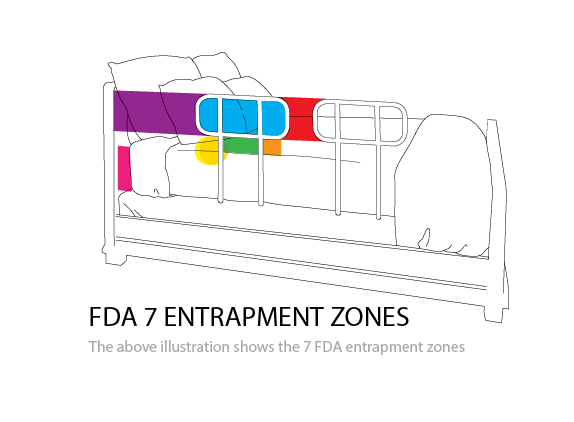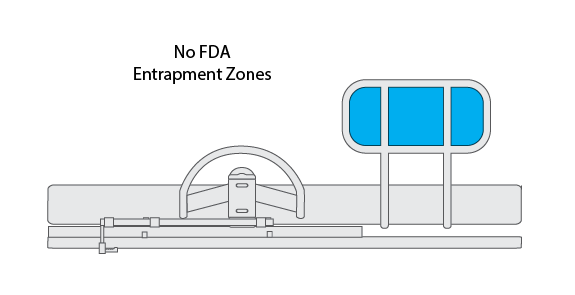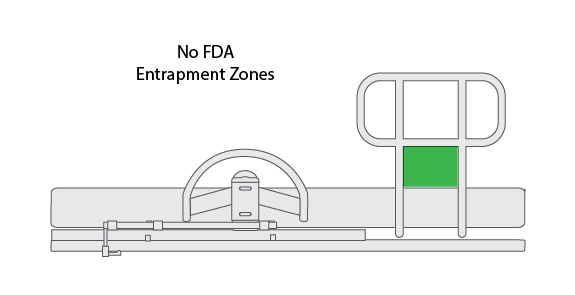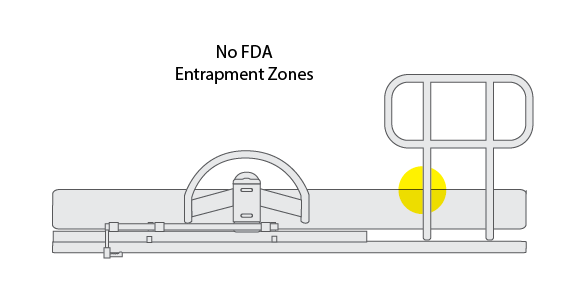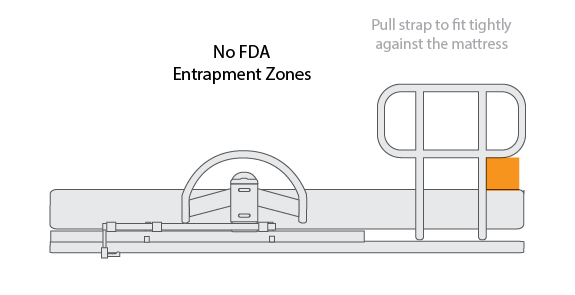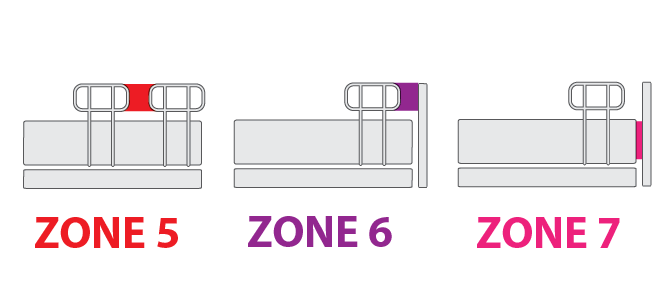What considerations need to be made before installing or using bed rails/bed handles?
At least two assessments should be made by those who are using bed rails and those who are installing bed rails.
Installation assessment:
Improper installation of bed rails has resulted in serious injury and even death. Complying with the suggested recommendations relating to the 7 zones of entrapment by the U.S. Food and Drug Administration (FDA) and the Hospital Bed Safety Workgroup (HBSW) are essential.
The type of bed and mattress should be assessed before installation. Adjustable frame beds, air mattresses, water beds, light weight foam mattresses, are some examples that may affect the 7 zones of entrapment in a negative manner. Head and foot boards also contribute to entrapment as shown in zone 6 and 7. The frame that connects the head and foot boards may also contribute to entrapment by creating a space between the inside surface of the bed rail and the mattress as shown in zone 3.
Stander Incorporated includes safety devices on certain bed rails to help prevent entrapment. Typical safety devices are sewn bed rail covers and safety straps. These safety devices must always be installed properly and must not be taken off at any time; failure to use these safety devices will increase the risk of injury or death. Stander will not be liable for injury or death.
User assessment:
It is important for those who are installing the bed rail, and those who will be using the bed rail, to assess if those using the bed rails are susceptible to entrapment. Individuals who have problems with memory, sleeping, incontinence, pain, uncontrolled body movement, who get out of bed and walk unsafely without assistance, frail, weak, confused, restless, under the influence of drugs or any substance that could affect their judgment, are susceptible to entrapment. Even those individuals who are capable of using bed rails responsibly are at risk, so it is important for those who are installing the bed rail and those using the bed rail to be aware of these risks and make the decision to accept liability for these risks.
